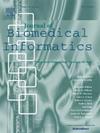跨个人和多个组织的缺失汇总EHR审计日志数据的输入
IF 4
2区 医学
Q2 COMPUTER SCIENCE, INTERDISCIPLINARY APPLICATIONS
引用次数: 0
摘要
目的比较原始策略与机器学习策略在ehr供应商生成数据中缺失数据的输入效果,探索分组标准,并评估内部实施的性能和可行性。材料与方法采用仅限医生的EHR审计日志汇总数据,对不同类型和规模的组织进行缺失数据输入实验。组织按教学状况分类。根据变异系数和缺失率将变量分为三类。选取r2值最大的模型作为鲁棒性最强的模型。结果教学组织与非教学组织在模型选择上呈现相似的R2趋势,但各班级内部存在一定差异。此外,滚动平均在不同的组织规模中提供了更一致的R2结果,特别是对于中型和小型组织。XGBoost在大型组织中的表现略好于在小型组织中的表现。单站点和多站点组织之间的比较显示,使用自己的数据进行估算的单个组织的r2值高于合并。讨论/结论:本研究引入了一种系统的变量分类方法,并确定了每个类别的最佳imputation策略。它还测试了这种方法在各个组织中的可伸缩性。组织可以有效地使用这种方法,包括变量分类和量身定制的imputation方法。组织规模对归咎过程没有显著影响。滚动平均时间序列方法优于使用非时间序列方法的机器学习方法。结合来自不同站点的数据并不一定能提高机器学习的估算。本文章由计算机程序翻译,如有差异,请以英文原文为准。

Imputation of missing aggregate EHR audit log data across individual and multiple organizations
Objective
To compare naive versus machine learning imputation strategies’ efficacy for imputing missing data in EHR-vendor generated data, explore subgrouping criteria, and evaluate performance and feasibility for in-house implementation.
Materials and Methods
Missing data imputation experiments involving various types and sizes of organizations were conducted using physician-only aggregate EHR audit log data. Organizations were categorized by teaching status. Based on the coefficient of variation and missing percentage, variables were classified into three categories before imputation. The model with the highest R2-value was selected as the most robust option.
Results
Teaching and non-teaching organizations showed similar R2 trends in model selection, though some differences existed within each class. Moreover, the rolling average provided more consistent R2 results across various organization sizes, especially for medium and small-sized organizations. XGBoost performed slightly better in large organizations than in small organizations. Comparisons between single- and multi-site organizations revealed higher R2-values for single organizations using their own data for imputation as opposed to merging.
Discussion/Conclusion:
The study introduced a systematic method for classifying variables and determining the best imputation strategy for each class. It also tested the scalability of this approach for individual organizations. Organizations can effectively use this method, including variable classification and tailored imputation methods. Organization size did not significantly affect the imputation process. The rolling average time-series method outperformed the machine learning method, which used non-time-series approaches. Combining data from diverse sites does not necessarily improve machine learning imputation.
求助全文
通过发布文献求助,成功后即可免费获取论文全文。
去求助
来源期刊

Journal of Biomedical Informatics
医学-计算机:跨学科应用
CiteScore
8.90
自引率
6.70%
发文量
243
审稿时长
32 days
期刊介绍:
The Journal of Biomedical Informatics reflects a commitment to high-quality original research papers, reviews, and commentaries in the area of biomedical informatics methodology. Although we publish articles motivated by applications in the biomedical sciences (for example, clinical medicine, health care, population health, and translational bioinformatics), the journal emphasizes reports of new methodologies and techniques that have general applicability and that form the basis for the evolving science of biomedical informatics. Articles on medical devices; evaluations of implemented systems (including clinical trials of information technologies); or papers that provide insight into a biological process, a specific disease, or treatment options would generally be more suitable for publication in other venues. Papers on applications of signal processing and image analysis are often more suitable for biomedical engineering journals or other informatics journals, although we do publish papers that emphasize the information management and knowledge representation/modeling issues that arise in the storage and use of biological signals and images. System descriptions are welcome if they illustrate and substantiate the underlying methodology that is the principal focus of the report and an effort is made to address the generalizability and/or range of application of that methodology. Note also that, given the international nature of JBI, papers that deal with specific languages other than English, or with country-specific health systems or approaches, are acceptable for JBI only if they offer generalizable lessons that are relevant to the broad JBI readership, regardless of their country, language, culture, or health system.
 求助内容:
求助内容: 应助结果提醒方式:
应助结果提醒方式:


